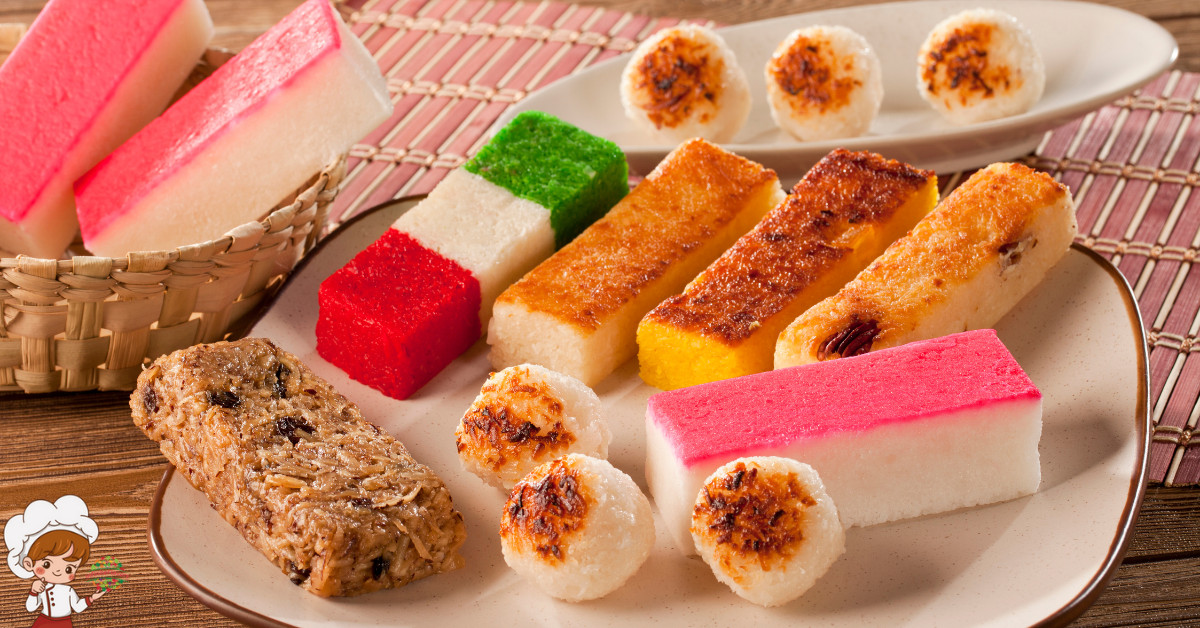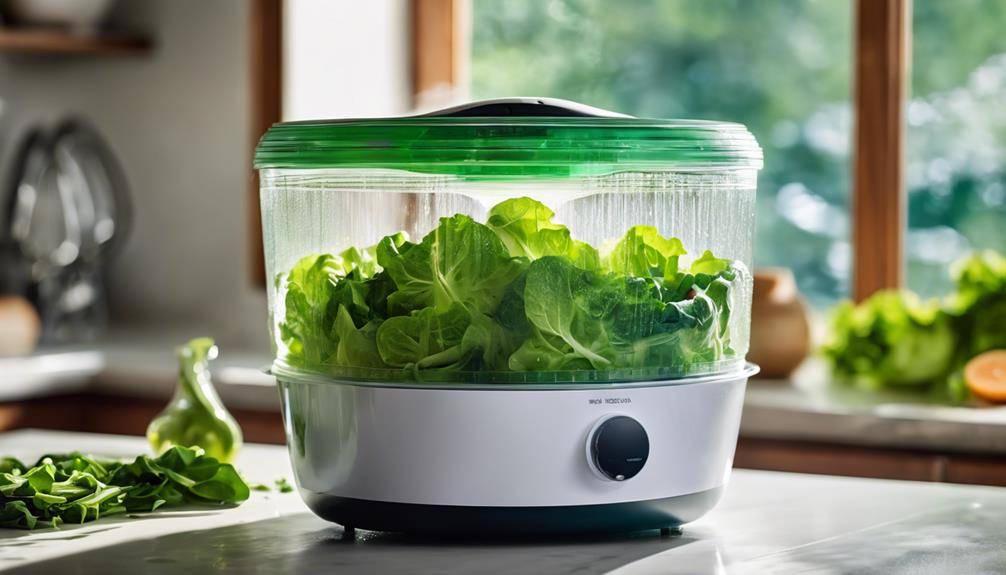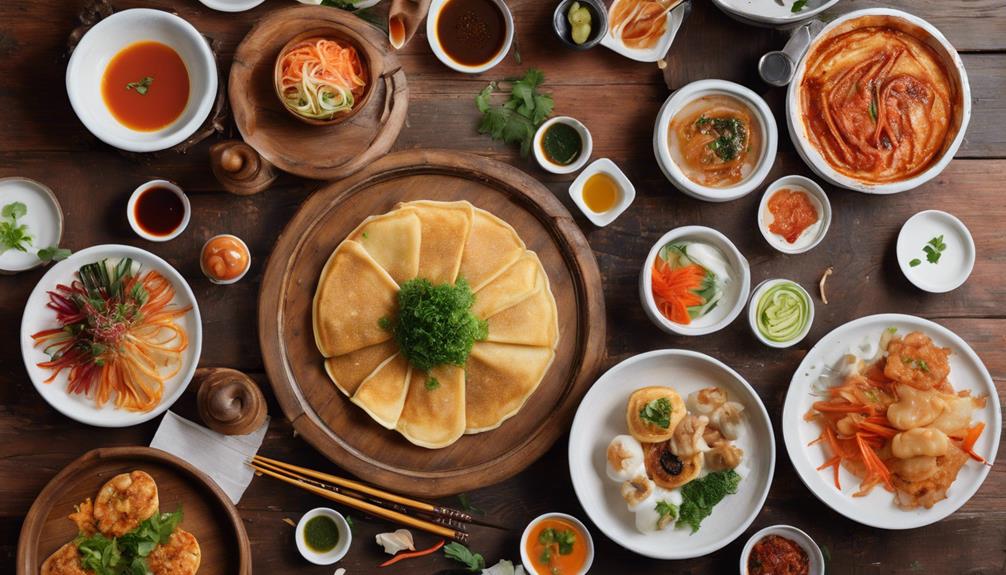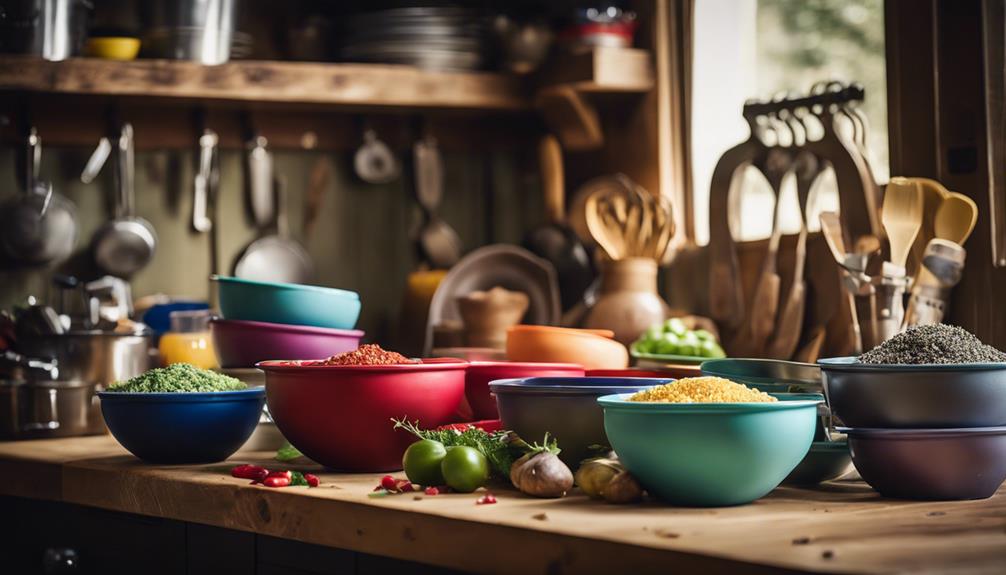The Best 10 Proper Grilling Temperatures For Meat
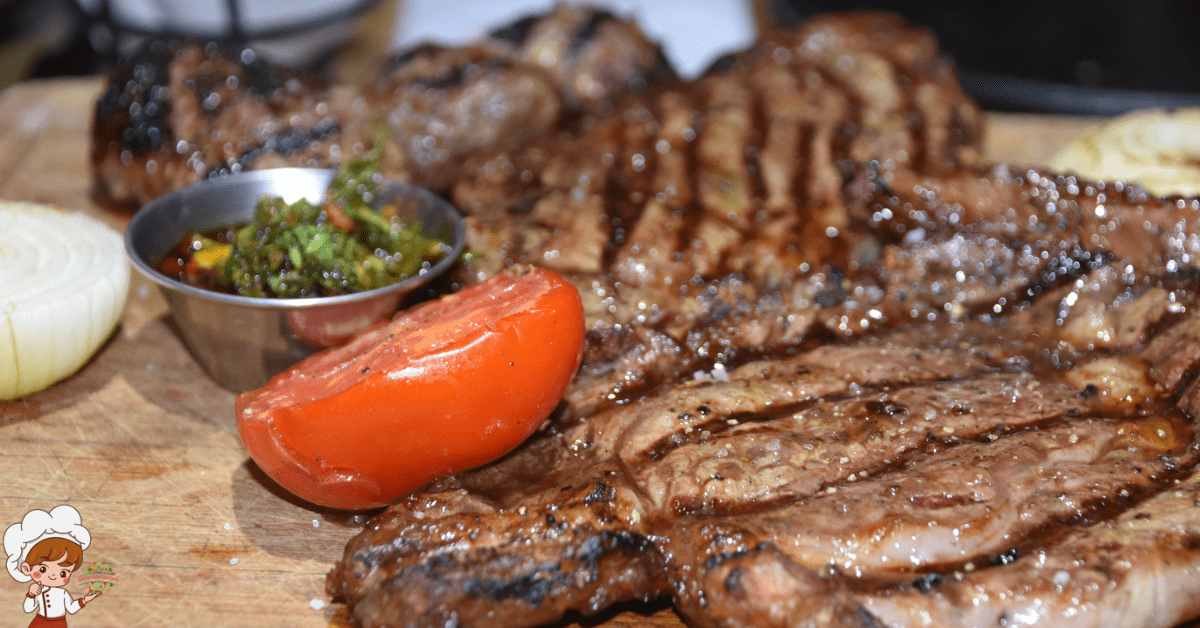
Grilling Temperatures For Meat; They say, “You are what you eat.” Well, when it comes to grilling meat, it’s not just about what you eat, but how you cook it. Proper grilling temperatures can make all the difference between a tender, juicy steak and a tough, dry disappointment. But what exactly are the right temperatures for each type of meat? Stick around and we’ll guide you through the heat, ensuring your next barbecue is a sizzling success.
Beef
When grilling beef, it is essential to ensure that you cook it at the correct temperature to achieve optimal flavor and tenderness. The proper grilling temperature for beef depends on the cut and desired doneness. For rare beef, the internal temperature should be around 125°F (51.7°C). To achieve medium-rare, the temperature should be between 135°F (57.2°C) and 140°F (60°C). If you prefer a medium doneness, aim for an internal temperature of 145°F (62.8°C) to 150°F (65.5°C). Well-done beef should be cooked to an internal temperature of 160°F (71.1°C).
To ensure the beef is cooked evenly and retains its natural juices, it is important to use proper beef grilling techniques. Start by preheating the grill to medium-high heat. Before grilling, make sure to pat the beef dry with a paper towel to remove any excess moisture. This helps to achieve a better sear on the meat. Season the beef with salt and pepper, or your desired marinade, to enhance the flavor.
Marinating beef before grilling can add delicious flavors and help tenderize the meat. It is important to marinate the beef for an adequate amount of time, depending on the cut and desired flavor intensity. For tender cuts like filet mignon or ribeye, marinate for 30 minutes to 2 hours. For tougher cuts like flank steak or skirt steak, marinating for 6 to 24 hours can help break down the fibers and make them more tender.
Pork
When grilling pork, it is crucial to ensure that it reaches the safe cooking temperature to eliminate any potential risks of foodborne illnesses. The recommended safe internal temperature for pork is 145°F (63°C), according to the USDA. This ensures that the pork is cooked thoroughly and safe to consume.
Safe Pork Cooking Temperatures
To ensure the safe consumption of pork, it is crucial to cook it to the recommended internal temperature. Pork should be cooked to a minimum internal temperature of 145°F (63°C) according to the United States Department of Agriculture (USDA) guidelines. This temperature ensures that harmful bacteria, such as salmonella and E. coli, are killed, reducing the risk of foodborne illnesses. When grilling pork, it is important to use proper grilling techniques to achieve the desired temperature. Preheat the grill to medium-high heat and sear the pork on both sides for a few minutes to lock in the juices.
Then, reduce the heat to medium and continue cooking until the internal temperature reaches 145°F (63°C). Remember to use a meat thermometer to accurately measure the temperature. Additionally, marinating the pork before grilling can add flavor and moisture. However, make sure to discard any leftover marinade that has come into contact with raw pork to avoid cross-contamination. By following these guidelines, you can enjoy safe and delicious pork dishes.
Grilling Time for Pork
For optimal grilling results, it is important to be aware of the appropriate grilling time for pork. When it comes to grilling pork, there are a few key factors to consider. First, the thickness of the pork cut will determine the cooking time. Thicker cuts will require more time on the grill, while thinner cuts will cook more quickly. Additionally, the type of pork cut will also impact the grilling time.
For example, pork chops will cook faster than pork tenderloin. It is also crucial to marinate the pork before grilling to enhance its flavor and tenderness. Marinating the pork not only adds moisture but also helps to break down the proteins, resulting in a more tender and juicy final product. By following these pork grilling techniques and marinating pork for grilling, you can achieve perfectly cooked and delicious pork every time.
Chicken
When grilling chicken, it is crucial to ensure that it reaches a safe internal temperature to prevent foodborne illnesses. The recommended minimum internal temperature for chicken is 165°F (74°C). To achieve this, follow grilling time guidelines based on the cut of chicken and the thickness of the meat. After grilling, allow the chicken to rest for a few minutes to retain its juices and enhance its flavor.
Safe Internal Temperature
Ensure that the chicken reaches a safe internal temperature before consuming it. Proper cooking techniques and meat preparation are crucial to avoid foodborne illnesses. When grilling chicken, it is essential to cook it thoroughly to eliminate any harmful bacteria that may be present. The safe internal temperature for chicken is 165°F (74°C). Use a meat thermometer to accurately measure the temperature. Insert the thermometer into the thickest part of the chicken, avoiding bone and fat.
Ensure that the thermometer does not touch the cooking surface as it may give an inaccurate reading. Once the chicken reaches the safe internal temperature, you can be confident that it is safe to eat. Remember, undercooked chicken can lead to food poisoning, so always prioritize proper cooking techniques and follow the recommended internal temperature guidelines.
Grilling Time Guidelines
To achieve perfectly grilled chicken, it is important to follow precise guidelines for grilling time. Cooking chicken on the grill requires careful attention to ensure it is cooked thoroughly and reaches a safe internal temperature. The grilling time for chicken will vary depending on the cut and thickness of the meat.
Boneless, skinless chicken breasts typically take around 6 to 8 minutes per side on a medium-high heat grill, reaching an internal temperature of 165°F (74°C). For bone-in chicken pieces, such as thighs or drumsticks, grill each side for approximately 10 to 12 minutes, until the internal temperature reaches the recommended 165°F (74°C). Remember to adjust the grilling time based on the thickness of the chicken to ensure it is cooked evenly and thoroughly.
Resting Period Importance
Resting after grilling is an essential step for achieving the best results with your chicken. The resting time benefits the meat in several ways. Firstly, it allows the juices within the chicken to redistribute, ensuring a more even distribution of moisture and flavor throughout the meat. This results in a juicier and more tender chicken. Additionally, the resting period allows the internal temperature of the chicken to stabilize. This ensures that the chicken is cooked to the desired level of doneness and prevents overcooking.
To properly rest the meat, simply remove it from the grill and place it on a cutting board or a clean plate. Tent the chicken loosely with aluminum foil and let it rest for about 5 to 10 minutes before serving. This resting period is crucial for achieving the best texture and flavor in your grilled chicken. Remember to always account for this important step in your grilling process.
Lamb
Grilling lamb requires a thorough understanding of the ideal temperatures to achieve the perfect level of tenderness and flavor. Lamb is a delicate meat that requires careful cooking to preserve its natural juiciness and tenderness. To achieve the best results, it is important to follow proper lamb grilling techniques and consider using lamb marinade recipes.
When grilling lamb, it is recommended to preheat the grill to a medium-high temperature of around 375°F (190°C). This temperature allows for a good sear on the outside while retaining moisture on the inside. It is essential to monitor the internal temperature of the lamb to ensure it is cooked to the desired level of doneness. For rare lamb, aim for an internal temperature of 125°F (52°C), medium-rare 135°F (57°C), medium 145°F (63°C), and well-done 160°F (71°C).
To enhance the flavor and tenderness of the lamb, marinating is highly recommended. A simple marinade can be made using olive oil, garlic, lemon juice, and a blend of herbs such as rosemary, thyme, and oregano. Marinate the lamb for at least 2 hours, or preferably overnight, to allow the flavors to penetrate the meat.
When grilling lamb, it is important to have a clean and well-oiled grill to prevent sticking. Place the lamb on the preheated grill and cook for about 4-5 minutes per side for medium-rare. Adjust the cooking time depending on the desired level of doneness.
Grilling lamb requires precision and attention to detail. By following the recommended lamb grilling techniques and utilizing flavorful marinades, you can ensure a tender and delicious result every time. Enjoy the succulent flavors of perfectly grilled lamb!
Fish
When grilling fish, it is crucial to maintain the ideal temperature and cooking time to achieve optimal flavor and texture. Proper fish grilling techniques are essential to ensure that the delicate flesh of the fish remains moist and flaky. To start, preheat your grill to a medium-high temperature of around 350 to 400 degrees Fahrenheit. This temperature range allows for a gentle and even cooking process without overcooking the fish.
Before placing the fish on the grill, make sure to clean and oil the grates to prevent sticking. The best fish seasoning will depend on your personal preference and the type of fish you are grilling. However, a simple combination of salt, pepper, and a squeeze of lemon juice can enhance the natural flavors of the fish without overpowering it.
When grilling fish, it is important to pay close attention to the cooking time. The general rule of thumb is to cook fish for about 10 minutes per inch of thickness. However, this can vary depending on the type and size of the fish. To determine if the fish is done, use a fork to gently flake the flesh. The fish should easily separate into flakes and be opaque throughout.
To prevent the fish from drying out, avoid flipping it more than once. Start by grilling the fish skin-side down and allow it to cook for about two-thirds of the total cooking time. Flip the fish carefully using a spatula, ensuring that it retains its shape. Continue grilling for the remaining time until the fish is fully cooked.
Turkey
To achieve succulent and flavorful turkey on the grill, it is crucial to maintain the appropriate temperature and cooking time, ensuring that the meat remains moist and tender. Turkey grilling techniques require careful attention to detail to achieve the desired result. Follow these tips to master the art of grilling turkey and impress your guests with a perfectly cooked bird.
Firstly, it is important to properly prepare the turkey before grilling. Start by marinating the turkey to enhance its flavor and tenderness. There are numerous turkey marinade recipes available, but a simple yet delicious option is a mixture of olive oil, lemon juice, garlic, and herbs such as rosemary and thyme. Allow the turkey to marinate for at least four hours, or overnight if possible, to maximize the flavor infusion.
When it comes to grilling, it is essential to ensure that the turkey is cooked thoroughly, but not overcooked. Preheat your grill to medium-high heat, around 350°F (175°C), and set up a two-zone grilling system. This means having one side of the grill with direct heat and the other side with indirect heat. Place the turkey on the indirect heat side and close the lid.
Maintain a consistent temperature throughout the grilling process by adjusting the burner controls as needed. A digital meat thermometer is an invaluable tool to accurately monitor the internal temperature of the turkey. The turkey is safe to eat when the thickest part of the breast and thigh registers an internal temperature of 165°F (74°C).
Remember to let the turkey rest for at least 15 minutes before carving to allow the juices to redistribute, resulting in a moist and flavorful bird. Follow these turkey grilling techniques, and with a little practice, you will become a master at grilling succulent and delicious turkey.
Veal
When grilling veal, it is important to follow certain tips and guidelines to ensure optimal results. First, make sure to preheat your grill to a medium-high temperature of around 375°F. This will help sear the veal and lock in its juices, resulting in a tender and flavorful dish. Additionally, pay attention to the cooking temperatures for different cuts of veal, such as 145°F for medium-rare and 160°F for medium. By following these grilling tips and cooking temperatures, you can enjoy perfectly grilled veal every time.
Veal Grilling Tips
For optimal results when grilling veal, it is recommended to follow these precise and knowledgeable tips. First and foremost, it is essential to master the veal grilling techniques. Start by preheating the grill to medium-high heat, around 375 to 400 degrees Fahrenheit. Ensure that the grates are clean and well-oiled to prevent sticking. Next, season the veal with salt and pepper or your preferred seasoning blend. If desired, you can enhance the flavor by marinating the veal in a variety of options such as lemon herb, garlic rosemary, or balsamic vinegar marinades. Let the veal marinate for at least 30 minutes to allow the flavors to penetrate.
When grilling, cook the veal over direct heat for 3-5 minutes per side, depending on the thickness, until it reaches an internal temperature of 145 degrees Fahrenheit. Remember to let the veal rest for a few minutes before serving to ensure juiciness. By following these techniques and utilizing different marinade options, you can achieve perfectly grilled veal every time.
Veal Cooking Temperatures
Now let’s shift our focus to the important aspect of veal grilling: understanding the proper veal cooking temperatures. When it comes to cooking veal, it is crucial to ensure that it is cooked to the correct internal temperature to ensure both safety and optimal taste. The recommended cooking temperature for veal depends on the cut and desired doneness. For veal steaks, such as rib or loin, a medium-rare to medium doneness is preferred. This means that the internal temperature should read between 145°F to 160°F (63°C to 71°C).
For veal roasts, a medium doneness is recommended, with an internal temperature of 160°F to 165°F (71°C to 74°C). To achieve the desired temperature, it is important to use an instant-read meat thermometer. As for veal seasoning options, popular choices include garlic, rosemary, thyme, and lemon zest. These seasonings enhance the flavor of the veal without overpowering it. Experimenting with different veal cooking techniques and seasonings can result in delicious and tender meat.
Game Meat
Game meat requires specific grilling temperatures to ensure optimal flavor and tenderness. When it comes to cooking techniques for game meat, grilling is one of the best methods to bring out its natural flavors and textures. Grilling imparts a smoky char that complements the rich taste of game meat. To achieve the perfect results, it is crucial to pay attention to the temperatures.
For most game meats, such as venison, elk, and wild boar, it is recommended to grill them at medium-high temperatures between 375°F and 450°F (190°C and 230°C). This temperature range allows the meat to cook evenly while retaining its moisture. Cooking at a high temperature sears the exterior, sealing in the juices and creating a flavorful crust.
Marinades and seasonings play a vital role in enhancing the taste of game meat. Before grilling, it is advisable to marinate the meat to tenderize it and infuse it with additional flavors. Acidic marinades, like those containing vinegar or citrus juices, help break down the tough fibers in game meat, resulting in a more tender and succulent outcome. Additionally, seasonings like herbs, garlic, and spices can be rubbed on the meat to add depth and complexity to the flavor profile.
To ensure that the game meat is cooked to the desired doneness, it is recommended to use a meat thermometer. For rare game meat, the internal temperature should reach 125°F to 130°F (52°C to 54°C), medium-rare at 135°F to 140°F (57°C to 60°C), and medium at 145°F to 150°F (63°C to 66°C). Remember to let the meat rest for a few minutes before slicing to allow the juices to redistribute.
Sausages
To achieve optimal flavor and texture, sausages require specific grilling temperatures. Cooking sausages on the grill is a popular method that imparts a delicious smoky flavor while ensuring a juicy and evenly cooked interior. When grilling sausages, it is crucial to consider the type of sausage, the thickness of the casing, and the specific seasonings used.
The ideal temperature for grilling sausages is around 160 to 165°F (71 to 74°C). This temperature ensures that the internal temperature of the sausage reaches a safe level to kill any potential bacteria, while still maintaining its juicy and succulent texture. It is important to use a meat thermometer to accurately monitor the internal temperature of the sausages to avoid undercooking or overcooking.
Sausage casings can vary in thickness, and this can affect the grilling time. Thinner casings cook faster, while thicker casings require more time to heat through. It is essential to adjust the grilling time accordingly to ensure that the sausage is cooked through without burning or drying out the exterior.
Sausage seasonings play a crucial role in the overall flavor profile of the sausage. Different types of sausages, such as Italian, bratwurst, or chorizo, have distinct seasonings that enhance their taste. Grilling sausages over high heat can help to caramelize and intensify the flavors, creating a delicious crust on the outside.
Vegetables
Grilling vegetables requires careful consideration of their unique characteristics and optimal cooking temperatures. Unlike meats, vegetables are delicate and require a more gentle approach to ensure they retain their texture and flavor. To achieve the perfect grilled vegetables, it is essential to understand the different grilling techniques and the importance of marinades.
When grilling vegetables, direct grilling is the most common technique used. This involves placing the vegetables directly on the grill grates over medium heat. However, it is crucial to ensure the grill is preheated to the right temperature, usually around 350 to 400 degrees Fahrenheit. This allows for even cooking and prevents the vegetables from sticking to the grates.
Marinades play a vital role in enhancing the flavors of grilled vegetables. They add moisture and infuse the vegetables with delicious seasonings. A simple marinade can be made by combining olive oil, garlic, lemon juice, and your choice of herbs and spices. Let the vegetables marinate for at least 30 minutes before grilling to allow the flavors to penetrate.
To prevent the vegetables from falling through the grates, you can use skewers or grill baskets. Skewers work well for smaller vegetables like cherry tomatoes, mushrooms, and zucchini. Grill baskets are ideal for delicate vegetables like asparagus and green beans, as they keep them safe while allowing for even grilling.
When grilling vegetables, keep a close eye on them as they cook quickly. Rotate them occasionally to ensure even cooking and prevent burning. Remember that different vegetables have varying cooking times, so it is essential to adjust accordingly.
Grilling Temperatures For Meat; Frequently Asked Questions
How Can I Ensure That My Beef Is Cooked to a Medium-Rare Temperature on the Grill?
To cook your beef to a medium-rare temperature on the grill, use grilling techniques like searing and indirect heat. Ensure a cooking steak by preheating the grill to 400°F, cooking for 4-5 minutes per side, and using a meat thermometer to check for an internal temperature of 135°F.
What Is the Recommended Internal Temperature for Pork Chops When Grilling?
To grill pork chops to perfection, follow these tips and techniques. Make sure the internal temperature reaches 145°F for medium-rare. Use a meat thermometer to check doneness. When the pork chops are cooked through, they should be juicy and tender.
Can You Provide Some Tips for Grilling Whole Chickens to Perfection?
When grilling whole chickens, it is important to master the right grilling techniques. Start by marinating the chicken to enhance flavor and tenderness. Follow proper grilling temperatures for meat to ensure a perfectly cooked bird.
What Is the Ideal Grilling Temperature and Cooking Time for Lamb Chops?
To achieve perfect lamb chops on the grill, preheat to the ideal grilling temperature of 375°F. Cook for 3-4 minutes per side for medium-rare, adjusting time based on desired doneness. Consider flavoring options such as garlic, rosemary, or lemon zest.
Is There a Specific Temperature Range That Should Be Followed When Grilling Fish Fillets?
When grilling fish fillets, you should use low heat to prevent them from sticking to the grill. Maintaining a temperature of around 350°F will ensure even cooking and a delicious result.
Conclusion
In conclusion, achieving the proper grilling temperatures for meat is crucial to ensure both safety and optimal flavor. By following the recommended temperature guidelines for beef, pork, chicken, lamb, fish, veal, game meat, sausages, and vegetables, you can guarantee that your grilled dishes are cooked to perfection. Remember to use a meat thermometer to accurately measure the internal temperature, as this is the key to achieving desired doneness. With precise temperature control, you can enjoy delicious and safe grilled meals every time.



